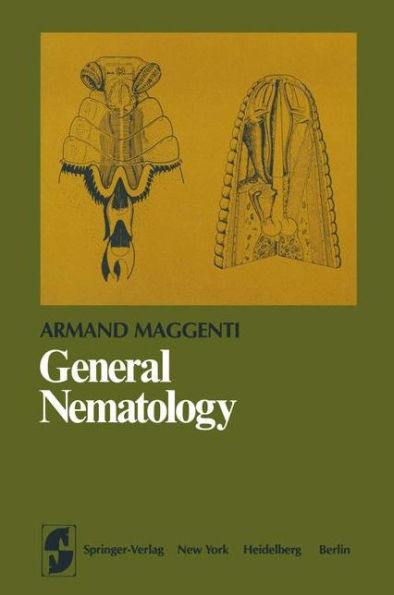General Nematology
This text is an overall view of nematology because I believe the science should be treated as a unified discipline. The differences in the biological habits of nematodes do not justify the separation of plant nematologists and animal nematologists, since the separation is not a reflection of any difIerences inherent to nematodes. Therefore, the book is arranged with a format that in the beginning chapters illustrates the similarities and se- quence of development of morphological characters among nematodes regardless of their biological habits. The later chapters illustrate the in- tegration of the evolutionary development of the parasitie habit from related free-living forms. Nematology is probably the last major discipline to establish its inde- pendence from the parent science of zoology. This natural evolvement of nematology has occurred because of the overwhelming accumulation of sophisticated information and research that reflects the unique relation- ships of nematodes to other forms of plant and animal life as weH as their relationships in other facets of the environment. N ematodes are inverte- brate animals that, like insects, are unusual in their great numbers and varieties, their smaH size (generally microscopic), their high degree of internal organization, and their virtually ubiquitous distribution. They oc- cupy almost every ecological niehe, often causing disease of humans, other animals, and plants. These activities often result in debility, death, or in the impairment and loss of food supply with consequent loss to producers and consumers.
"1013167731"
General Nematology
This text is an overall view of nematology because I believe the science should be treated as a unified discipline. The differences in the biological habits of nematodes do not justify the separation of plant nematologists and animal nematologists, since the separation is not a reflection of any difIerences inherent to nematodes. Therefore, the book is arranged with a format that in the beginning chapters illustrates the similarities and se- quence of development of morphological characters among nematodes regardless of their biological habits. The later chapters illustrate the in- tegration of the evolutionary development of the parasitie habit from related free-living forms. Nematology is probably the last major discipline to establish its inde- pendence from the parent science of zoology. This natural evolvement of nematology has occurred because of the overwhelming accumulation of sophisticated information and research that reflects the unique relation- ships of nematodes to other forms of plant and animal life as weH as their relationships in other facets of the environment. N ematodes are inverte- brate animals that, like insects, are unusual in their great numbers and varieties, their smaH size (generally microscopic), their high degree of internal organization, and their virtually ubiquitous distribution. They oc- cupy almost every ecological niehe, often causing disease of humans, other animals, and plants. These activities often result in debility, death, or in the impairment and loss of food supply with consequent loss to producers and consumers.
199.99
In Stock
5
1

General Nematology
372
General Nematology
372Hardcover(1981)
$199.99
199.99
In Stock

Product Details
| ISBN-13: | 9780387905884 |
|---|---|
| Publisher: | Springer New York |
| Publication date: | 11/30/1981 |
| Series: | Springer Series in Microbiology |
| Edition description: | 1981 |
| Pages: | 372 |
| Product dimensions: | 0.00(w) x 0.00(h) x 0.03(d) |
From the B&N Reads Blog
